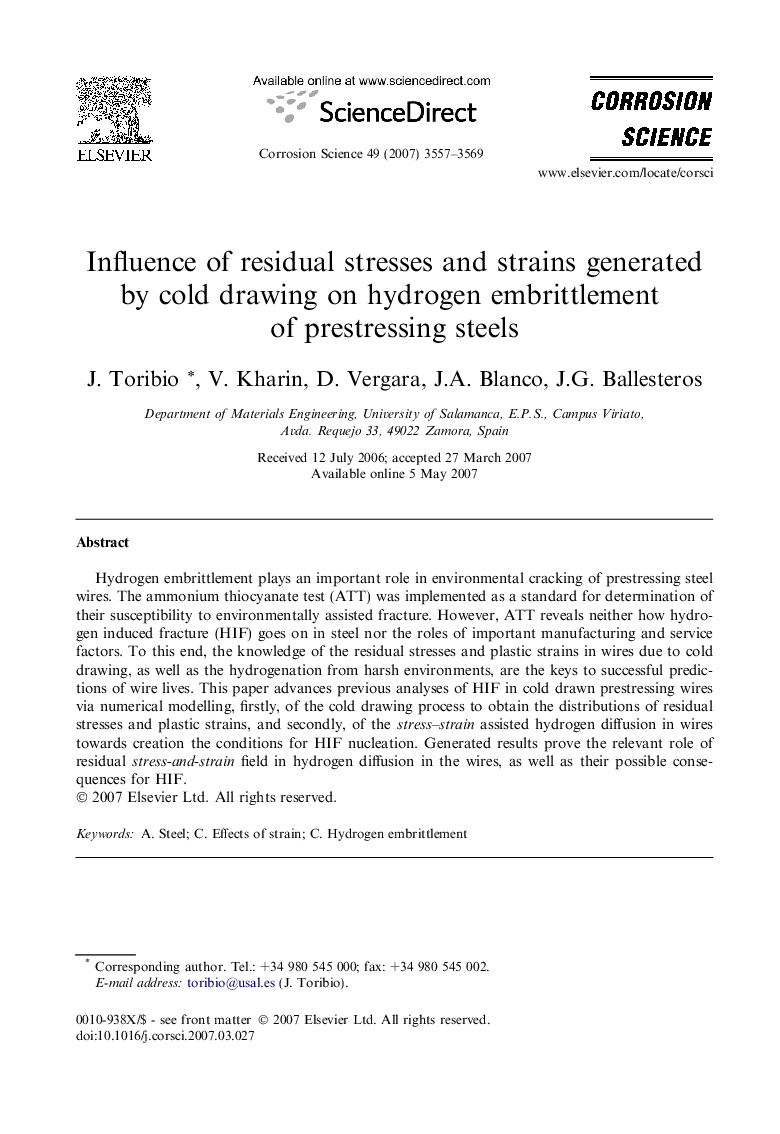| کد مقاله | کد نشریه | سال انتشار | مقاله انگلیسی | نسخه تمام متن |
|---|---|---|---|---|
| 1471718 | 990358 | 2007 | 13 صفحه PDF | دانلود رایگان |

Hydrogen embrittlement plays an important role in environmental cracking of prestressing steel wires. The ammonium thiocyanate test (ATT) was implemented as a standard for determination of their susceptibility to environmentally assisted fracture. However, ATT reveals neither how hydrogen induced fracture (HIF) goes on in steel nor the roles of important manufacturing and service factors. To this end, the knowledge of the residual stresses and plastic strains in wires due to cold drawing, as well as the hydrogenation from harsh environments, are the keys to successful predictions of wire lives. This paper advances previous analyses of HIF in cold drawn prestressing wires via numerical modelling, firstly, of the cold drawing process to obtain the distributions of residual stresses and plastic strains, and secondly, of the stress–strain assisted hydrogen diffusion in wires towards creation the conditions for HIF nucleation. Generated results prove the relevant role of residual stress-and-strain field in hydrogen diffusion in the wires, as well as their possible consequences for HIF.
Journal: Corrosion Science - Volume 49, Issue 9, September 2007, Pages 3557–3569